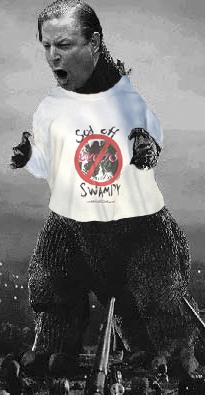To Bloomberg, Everything Is Either Climate Change Or Racism
God, they get annoying. This morning’s example is this long, highly researched, data-packed article on Amazon’s Prime Same-Day Delivery service
For residents of minority urban neighborhoods, access to Amazon.com’s vast array of products—from Dawn dish soap and Huggies diapers to Samsung flatscreen TVs—can be a godsend. Unlike whiter ZIP codes, these parts of town often lack well-stocked stores and quality supermarkets. White areas get organic grocers and designer boutiques. Black ones get minimarts and dollar stores. People in neighborhoods that retailers avoid must travel farther and sometimes pay more to obtain household necessities. “I don’t have a car, so I love to have stuff delivered,” says Tamara Rasberry, a human resources professional in Washington, D.C., who spends about $2,000 a year on Amazon Prime, the online retailer’s premium service that guarantees two-day delivery of tens of millions of items (along with digital music, e-books, streaming movies, and TV shows) for a yearly $99 membership fee. Rasberry, whose neighborhood of Congress Heights is more than 90 percent black, says shopping on Amazon lets her bypass the poor selection and high prices of nearby shops.
As Amazon has expanded rapidly to become “the everything store,” it’s offered the promise of an egalitarian shopping experience. On Amazon and other online retailers, a black customer isn’t viewed with suspicion, much less followed around by store security. Most of Amazon’s services are available to almost every address in the U.S. “We don’t know what you look like when you come into our store, which is vastly different than physical retail,” says Craig Berman, Amazon’s vice president for global communications. “We are ridiculously prideful about that. We offer every customer the same price. It doesn’t matter where you live.”
All well and good, right?
But WAIT
Yet as Amazon rolls out its upgrade to the Prime service, Prime Free Same-Day Delivery, that promise is proving harder to deliver on. The ambitious goal of Prime Free Same-Day is to eliminate one of the last advantages local retailers have over the e-commerce giant: instant gratification. In cities where the service is available, Amazon offers Prime members same-day delivery of more than a million products for no extra fee on orders over $35. Eleven months after it started, the service includes 27 metropolitan areas. In most of them, it provides broad coverage within the city limits. Take Amazon’s home town of Seattle, where every ZIP code within the city limits is eligible for same-day delivery and coverage extends well into the surrounding suburbs.
In six major same-day delivery cities, however, the service area excludes predominantly black ZIP codes to varying degrees, according to a Bloomberg analysis that compared Amazon same-day delivery areas with U.S. Census Bureau data.
In Atlanta, Chicago, Dallas, and Washington, cities still struggling to overcome generations of racial segregation and economic inequality, black citizens are about half as likely to live in neighborhoods with access to Amazon same-day delivery as white residents.
The disparity in two other big cities is significant, too. In New York City, same-day delivery is available throughout Manhattan, Staten Island, and Brooklyn, but not in the Bronx and some majority-black neighborhoods in Queens. In some cities, Amazon same-day delivery extends many miles into the surrounding suburbs but isn’t available in some ZIP codes within the city limits.
Bloomberg then goes on and on with this implication that there is some nefarious plot afoot to specifically deny black Prime members the delivery service, this “right” they are yet again having stolen from them.
Because, you see, if you specifically go out of your way to not make decisions based on racial data you are, naturally, a racist:
Amazon, he says, has a “radical sensitivity” to any suggestion that neighborhoods are being singled out by race. “Demographics play no role in it. Zero.”
Amazon says its plan is to focus its same-day service on ZIP codes where there’s a high concentration of Prime members, and then expand the offering to fill in the gaps over time. “If you ever look at a map of service for Amazon, it will start out small and end up getting big,” he says.
This is a logical approach from a cost and efficiency perspective: Give areas with the most existing paying members priority access to a new product. Yet in cities where most of those paying members are concentrated in predominantly white parts of town, a solely data-driven calculation that looks at numbers instead of people can reinforce long-entrenched inequality in access to retail services. For people who live in black neighborhoods not served by Amazon, the fact that it’s not deliberate doesn’t make much practical difference. “They are offering different services to other people who don’t look like you but live in the same city,” says Rasberry.
No, they are not, because THEY DON’T KNOW WHAT YOU LOOK LIKE. Sorry; in fact, they don’t even CARE what you look like.
And that is their unpardonable sin.

Let me get this straight.
If you notice the colour of someone’s skin, you’re racist.
If you don’t notice the colour of someone’s skin, you’re racist.
Is that about it?